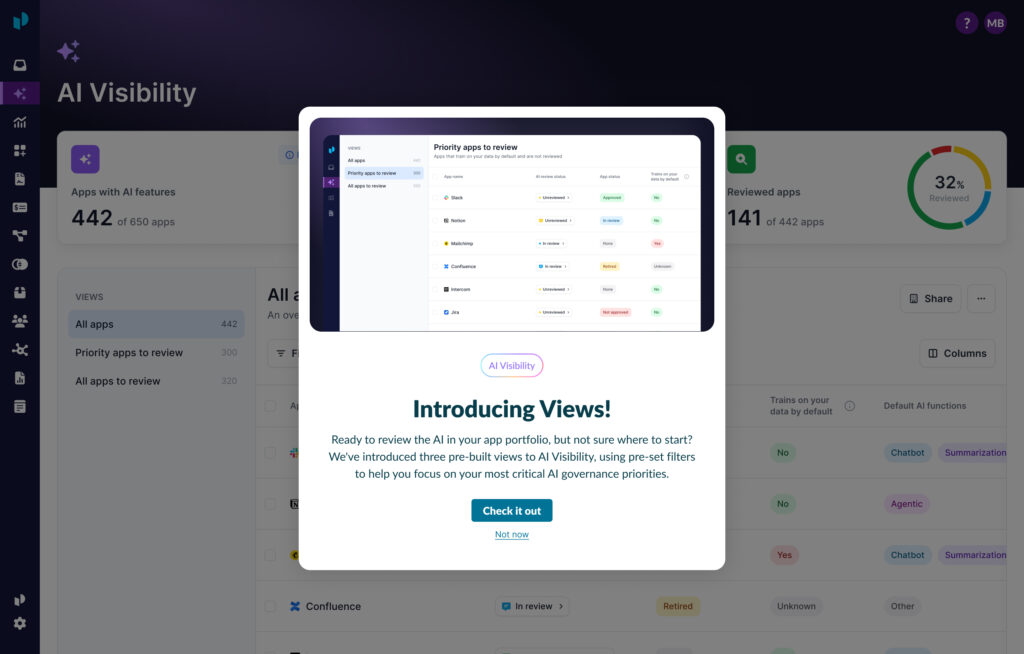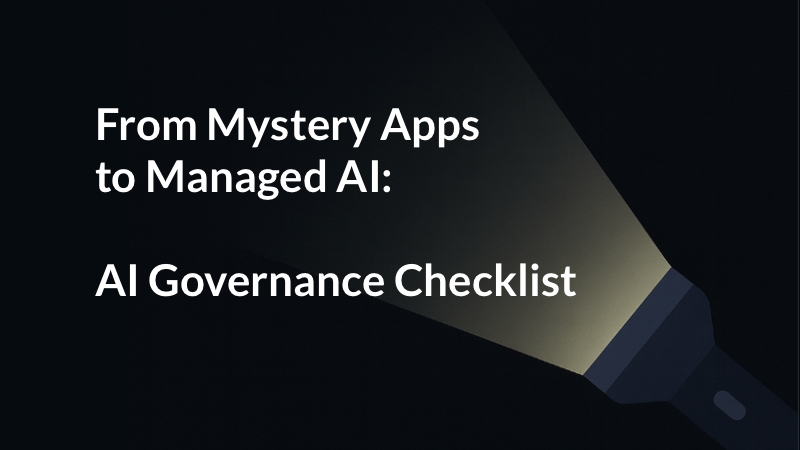Why SaaS renewals need to be a team sport
By Aashish Chandarana – March 16, 2023
Software spending is increasingly shifting to SaaS applications. According to Gartner, cloud technologies make up 58% of software spend (SaaS and public cloud included) and SaaS spend is growing by 15-20% annually. What this means for Technology leaders is that managing and understanding these portfolios is becoming increasingly challenging in a world where we’re adding in excess of 50-60 net new applications a year.
In today’s uncertain economic climate, there’s increased pressure to get this proliferation under control and apply real governance around what is being spent. In addition to this the need to reduce third-party risk remains at the forefront for not only Technology leaders but also across a slew of Executives in a company.
Just getting to visibility is no longer enough—knowing how to act and collaborate around this data is becoming the norm.
The complication: many stakeholders are now involved
Procurement teams are dealing with more SaaS purchases and renewals than ever before. The process involves many different stakeholders—and that’s not just in IT where you need to ensure you have deployed the applications properly, that the tools are being adopted, the application owner has provided the appropriate transition to the Ops team to service the tool, and it has been integrated well into your service catalog.
Nowadays, you also need to partner with Finance — from Procurement through to Financial Planning & Analysis (FP&A) and all the way to the CFO, each has a stake in what we are doing — and rightly so. How else can we ensure transparency, accountability and ROI on the investments we are making to drive the company’s growth? Add to this the partnership with the Line of Business leaders about their portfolio and the decision-making process and matrix gets further complicated.
The problem is teams too often rely on pure gut instincts and point in time data that may no longer be valid to make renewal and purchasing decisions. Add to that an overly complex data-gathering process that involves a lot of inefficient manual work pulling and updating information in siloed systems. This plays out in a Gartner Peer Insight survey Productiv commissioned: 31% of CIOs and IT VPs said they rely on reports provided by vendors to track how their employees use SaaS apps, 30% said they rely on manual checks within each tool and 24% said they rely on conversations with employees.
The implication: lack of data is leading to wasted spending
When companies don’t have accurate, timely and actionable data on the SaaS tools they have and that their employees actually use, this leads to apps auto-renewing that have low engagement or, even worse, are unused.
According to our data, organizations have multiple apps across their portfolio that do the same or similar things. Organizations have, on average, 9 spreadsheet and presentation SaaS apps, 8 project management SaaS apps, 8 learning SaaS apps and 5 messaging SaaS apps.
These duplications mean contracts get renewed with far more licenses than a company actually needs and at a higher price. On average, 55% of SaaS app licenses go unused.
Solution: Organizations need a single system of record for SaaS
In order to optimize costs, organizations need a system of record for SaaS. Ideally, this single system of record would be in one place where decision-makers can:
- Discover all apps across the SaaS portfolio, including shadow IT
- Gain visibility into app usage, feature engagement and spend
- Compare apps by team and category to identify and assess duplicate, low impact apps
- View app contracts with key information (app owner, contract end, spend, etc)
- Access license rightsizing recommendations and pricing benchmarks to drive better renewals
Procurement, finance, and IT teams should align around trusted data for improved decision-making
For better decision-making, companies should look for tools that enable them to centralize SaaS data and approach renewals in a more proactive, data-driven way. Procurement teams should be able to better manage renewals with access to the information they need and partner with the application owners better — and this includes knowing who needs to be involved in a renewal discussion and tracking renewal decisions.
When finance and procurement teams are better informed, they can avoid unwanted auto-renewals and surprise “true-ups” and conduct true vendor negotiations with benchmarks and feature-level usage insights (getting the right number of licenses in the right tiers at the right price).
When companies can align around the right data, they can save on SaaS purchases and renewals, avoid business disruption and prevent animosity between teams since decisions are collaboratively aligned upon.
About Productiv:
Productiv is the IT operating system to manage your entire SaaS and AI ecosystem. It centralizes visibility into your tech stack, so CIOs and IT leaders can confidently set strategy, optimize renewals, and empower employees.





